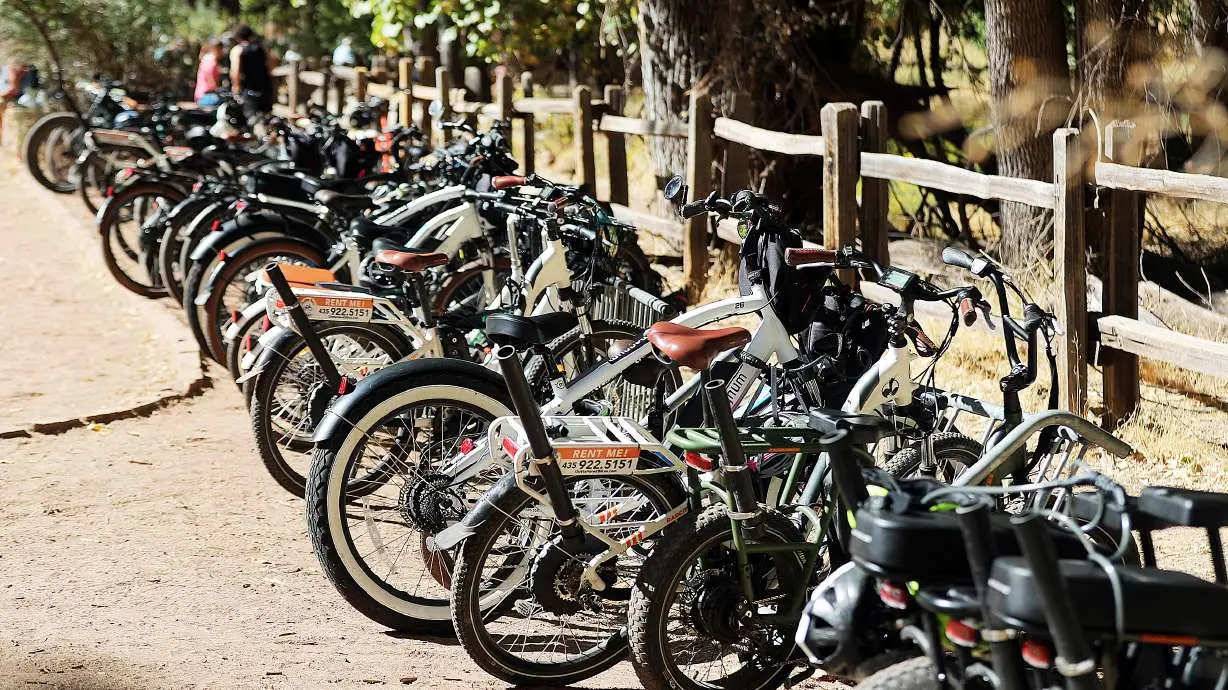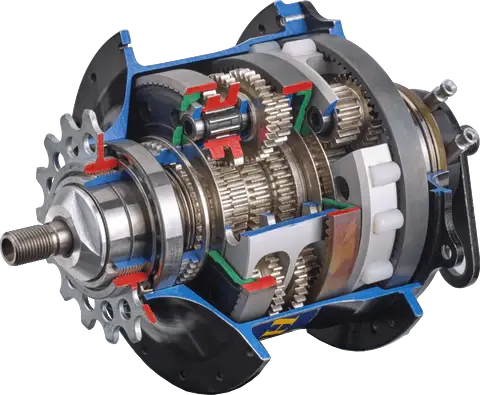Did You Know That Electric Bikes Are Allowed In Parks?

The New Era of E-Bikes in National Parks: What You Need to Know
Introduction
The world of outdoor recreation is evolving, and with it comes the rise of electric bikes (e-bikes) as a popular mode of transportation in our national parks. Recently, the National Park Service (NPS) made a significant decision regarding the use of e-bikes within these protected areas, sparking both excitement and debate among outdoor enthusiasts, environmentalists, and park officials alike.
In this comprehensive guide, we’ll explore the nuances of this decision, its implications for park visitors, and what it means for the future of recreation in America’s most treasured landscapes. Whether you’re an avid cyclist, a casual park-goer, or simply curious about the intersection of technology and nature, this article will provide you with valuable insights into the changing face of national park exploration.
The National Park Service’s Decision
A Decentralized Approach
In a move that reflects the diverse nature of America’s national parks, the NPS has opted for a decentralized approach to e-bike regulation. Rather than implementing a blanket rule for all parks, the agency has decided to empower individual park managers to make decisions based on their specific circumstances.
This decision, announced in a concise document on a recent Friday, reaffirms a rule originally issued nearly four years ago. The NPS stated that the use of electric bikes in national parks “will not cause significant impacts,” provided they are properly managed.
The Rationale Behind the Decision
Park service officials emphasized the potential benefits of e-bikes, stating:
“If properly managed, the use of electric bikes can bring more fun and healthy recreational opportunities to visitors to national parks and support active transportation options.”
This perspective highlights the NPS’s recognition of e-bikes as a tool for enhancing visitor experiences and promoting sustainable transportation within park boundaries.
The Journey to the Current Policy
Historical Context
The path to the current e-bike policy in national parks has been anything but straightforward. Let’s take a look at the key milestones:
- December 2020: Under the Trump administration, the NPS initially ruled that e-bikes could go anywhere regular bicycles were permitted.
- Legal Challenge: Environmental groups contested this decision in court, arguing that it lacked proper environmental assessment.
- 2022 Court Ruling: A judge in the U.S. District Court for the District of Columbia determined that the initial rule did not comply with the National Environmental Policy Act (NEPA). The court mandated that the agency complete a thorough environmental assessment.
- Public Comment Period: In response to the court ruling, the NPS initiated a public comment period to review the plan.
- 2024 Decision: Under the Biden administration, the NPS essentially adopted the same rule as before, but with a more robust environmental assessment to support it.
The Current Framework
Under the new policy, park rangers have been granted the authority to allow e-bikes in appropriate areas, including:
- Park roads
- Parking lots
- Administrative roads
- Trails where traditional bikes are permitted
It’s important to note that the ruling explicitly prohibits e-bikes in protected wilderness areas where regular bikes are also not allowed.
Considerations for E-Bike Use
Safety and Resource Conservation
The NPS has outlined several factors that park managers must consider when determining whether and where to allow e-bikes:
- Public health and safety
- Natural resource conservation
- Cultural resource preservation
- Other management activities and goals
This multifaceted approach ensures that the introduction of e-bikes does not come at the expense of the parks’ primary mission: to preserve natural and cultural resources for future generations.
E-Bikes in Utah’s “Big Five” National Parks
Utah’s five national parks, often referred to as the “Big Five,” have each implemented their own e-bike regulations within the framework provided by the NPS. Let’s take a closer look at the rules for each park:
Arches National Park
E-Bike Policies
- E-bikes are permitted on all paved and unpaved roads within the park.
- Off-road trails are strictly off-limits for e-bikes.
Visitor Impact
This policy allows e-bike users to explore the park’s iconic red rock formations and arches while maintaining the integrity of sensitive off-road areas.
Bryce Canyon National Park
E-Bike Policies
- Bicycles and e-bikes are allowed on park roads and shared park roads.
- Other park roads are off-limits to both bicycles and e-bikes.
Visitor Impact
E-bike users can enjoy the stunning vistas of Bryce Canyon’s amphitheaters while adhering to designated routes.
Canyonlands National Park
E-Bike Policies
- Bicycles and e-bikes are restricted to public roads and parking areas within the park.
Visitor Impact
While more limited than some other parks, this policy still allows e-bike users to access key viewpoints and facilities within Canyonlands.
Capitol Reef National Park
E-Bike Policies
- Bicycles and e-bikes are permitted on all designated roads, campgrounds, and paved viewpoints.
- Prohibited areas include closed roads, ditches, trails (including those between campgrounds and roads), and other off-road areas.
Visitor Impact
This policy provides a balance between access and preservation, allowing e-bike users to explore much of the park while protecting sensitive areas.
Zion National Park
E-Bike Policies
- Class 1 pedal-assist e-bikes (which assist only when the rider is pedaling and not above 20 mph) are allowed in the same areas as regular bicycles.
- Both are permitted on the park’s multi-use Pa’rus Trail and all roads within the park.
- E-bikes are not allowed on park shuttles.
- Bikes are prohibited in the Zion-Mount Carmel Tunnel.
Visitor Impact
Zion’s policy is perhaps the most nuanced, recognizing the different classes of e-bikes and providing specific guidelines for their use.
The Broader Implications
Environmental Considerations
The introduction of e-bikes in national parks raises important environmental questions:
- Reduced Carbon Emissions: E-bikes could potentially decrease the number of cars in parks, leading to lower carbon emissions.
- Trail Impact: There are concerns about increased trail usage and potential erosion due to the higher speeds and weights of e-bikes.
- Wildlife Disturbance: The quieter nature of e-bikes might lead to more unexpected encounters with wildlife.
Accessibility and Inclusivity
E-bikes have the potential to make national parks more accessible to a wider range of visitors:
- Physical Limitations: Individuals with physical limitations may now be able to explore areas of parks that were previously challenging.
- Age Diversity: Older visitors or those with less cycling experience can more easily participate in bike-based activities.
- Family-Friendly: Families with children can cover more ground together, enhancing the shared experience of nature.
Economic Impact
The allowance of e-bikes could have economic implications for both the parks and surrounding communities:
- Rental Services: Local businesses may see an opportunity in e-bike rentals and guided e-bike tours.
- Extended Visits: Visitors might stay longer in parks and nearby towns if they can explore more efficiently.
- Infrastructure Investment: Parks may need to invest in charging stations and upgraded trails to accommodate e-bikes.
Best Practices for E-Bike Use in National Parks
Safety First
- Wear a Helmet: Always wear a properly fitted helmet, regardless of local laws.
- Be Visible: Use lights and wear bright or reflective clothing, especially in low-light conditions.
- Follow Speed Limits: Adhere to posted speed limits and ride at a safe speed for conditions.
Respect the Environment
- Stay on Designated Trails: Never ride off-trail or in prohibited areas.
- Leave No Trace: Pack out all trash and avoid disturbing plants or wildlife.
- Quiet Operation: Be mindful of the quiet nature of e-bikes and give verbal warnings when passing others.
Etiquette and Courtesy
- Yield Appropriately: Give right of way to hikers and equestrians on multi-use trails.
- Communicate: Use a bell or voice to alert others when approaching.
- Be Prepared: Carry basic repair tools and know how to use them.
The Future of E-Bikes in National Parks
As technology advances and visitor preferences evolve, we can expect to see continued discussions and potential policy adjustments regarding e-bikes in national parks. Some potential developments to watch for include:
- Standardized Policies: There may be a push for more uniform e-bike regulations across the national park system.
- Improved Infrastructure: Parks might invest in e-bike-specific trails or charging stations.
- Environmental Studies: Long-term studies on the impact of e-bikes on park ecosystems could inform future policies.
- Integration with Park Programs: E-bikes could be incorporated into ranger-led tours or educational programs.
Conclusion
The National Park Service’s decision to allow individual parks to regulate e-bike use marks a significant shift in how we approach recreation in these protected areas. By balancing the desire for increased accessibility with the need for environmental conservation, the NPS is paving the way for a new era of park exploration.
As visitors, it’s our responsibility to stay informed about park-specific regulations, practice safe and courteous e-bike use, and always prioritize the preservation of these natural wonders. Whether you’re planning your first e-bike adventure in a national park or you’re a seasoned cyclist curious about this new development, remember that with great access comes great responsibility.
The introduction of e-bikes in national parks is more than just a policy change—it’s an opportunity to reimagine our relationship with these treasured landscapes. As we pedal into this new frontier, let’s do so with respect, awareness, and a commitment to preserving the beauty and integrity of America’s national parks for generations to come.


